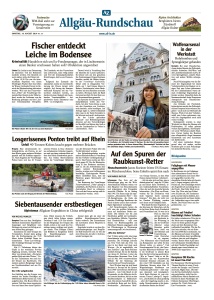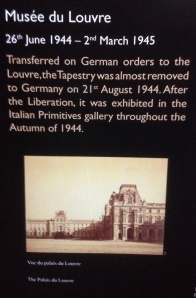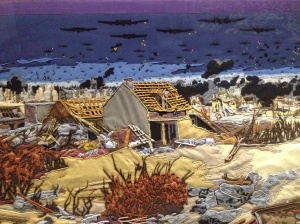I thought I had finished my last blog post a year ago, but it turns out that I have a few updates…
First, when I visited Neuschwanstein Castle, a local reporter named Markus Raffler interviewed me on the topic of my journey as “Monuments Girl.” Here’s the article, which appeared in the newspaper August 16, 2014.
Monuments Girl Article in Allgäuer Zeitung (German)
Monuments Girl Article in Allgäuer Zeitung (English translation)
Second, in February 2014, around the time when the “Monuments Men” movie was released, the same reporter wrote an article about the true story of hidden art at Neuschwanstein. Below is a copy of the article in its original (German), as well as a version translated into English. (Shout out to my high school German teacher, Mary Ashcraft, who worked on both translations.)
The Treasure in Neuschwanstein Castle (German)
The Treasure in Neuschwanstein Castle (English translation)
And finally, a note from the past…
After leaving Munich, I headed straight for Ohio to visit family and reflect on my journey as “Monuments Girl.” On the last night before I was scheduled to leave, my parents and I had dinner at my aunt’s house where my grandmother, Katherine Serrell Rorimer (also known as K.K.) used to spend summers. While I was clearing dinner dishes, a pile of books on the staircase caught my eye. I paused to have a look. There was a copy of “Survival,” and underneath, was a German book entitled, “Die geraubte Kunst,” written by Kai Freimuth, all about stolen art in World War II.
(I remember when Kai visited my grandmother in the 80s. He was working on his Ph.D., and he spent several weeks interviewing her to learn about my grandfather and the MFA&A).
I picked up the book and began paging through, focusing mostly on the photographs, which were easier to understand than the German text. Just then, I noticed a small, white piece of paper sticking out. It was a note to me! I recognized my grandmother’s handwriting with the following instructions, “Sarah, read about Goslar, page 125.” My fingers flipped furiously through the book, locating the page. Sure enough, there was a section on Goslar, Germany with a two-page spread of the Kaiserpfalz, the Imperial Palace in the center of the town. The photograph showed the interior of the Great Hall piled from floor to ceiling with wooden crates and bundles of important looking papers – clear evidence of hidden art!
I ran into the kitchen to show my family, “Look – K.K. wrote me a note!”
I couldn’t believe the timing. My grandmother’s message had been sitting in that book for nearly two decades, just waiting to be found. Had I noticed it any earlier, it wouldn’t have meant all that much, but appearing at the end of my trip, it felt miraculous, like a seal of approval handed directly from my grandmother to me. Although the note was old, the thought was fresh, and I was finally ready to receive it.
You may be wondering about the significance of Goslar. When I was 15 years old, I spent three weeks there as part of a high school summer exchange. I remember sitting on the lawn in front of the Kaiserpfalz with my friends one evening. Little did I know, I was a stone’s throw from MFA&A wartime activities. In my grandmother’s lifetime, Goslar was perhaps the closest I came to retracing my grandfather’s footsteps. K.K. must have understood the significance of that place when she wrote me the note.
Although it took another 15+ years, as well as a bestselling book and a major motion picture for me to take an active interest in the Monuments Men, finding my grandmother’s note brought back the same strange feeling I had experienced on the steps of Neuschwanstein Castle – it was like being in a time-warp. At that moment, the linear timeline I had been following collapsed into a single point; my grandmother was long gone, but in fact, she was right there.
I couldn’t help but wonder, “If only they knew… What would K.K. think about my trip? What would my grandfather say? What kinds of journeys will my grandchildren embark upon? What will they think about me?”
Fortunately, God knows, and time will tell.













